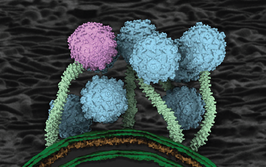Continuous Control
If the pharma industry wants to replace conventional batch processing with continuous manufacturing, it must also employ control procedures to ensure quality.
According to the FDA, continuous manufacturing has many advantages... greater consistency in product quality, reduced inventory, lower capital costs, a smaller ecological footprint, minimized manual handling, shorter process times through integrated processing, the ability to employ real-time release testing approaches... In essence, continuous manufacturing supports Quality by Design (QbD) initiatives by allowing quality to be directly built into a process – and the FDA is encouraging companies to consider continuous technologies (1).
However, working with a truly continuous system within a highly-regulated sector incurs challenges. Consistent outputs depend entirely upon the quality of feed materials, as well as a comprehensive understanding of how those materials behave within the process, and how changes in process conditions might affect that behavior. You must know exactly which material parameters are critical to your process – after all, there’s little benefit in generating multiple parameters if they have no relevance on what you’re trying to achieve.
When it comes to powders, employing tests that simulate conditions within the process is key. Accurately building a design space within which optimum process performance can be maintained requires comprehensive characterization of the powders – and that characterization needs to be relevant to the process. Traditional powder characterization methods, such as angle of repose, flow through an orifice, and tapped density, have been shown to be limited when used to define design spaces representing continuous flow. Instead, dynamic testing, where the axial and rotational forces acting on a blade as it rotates through a powder sample, can directly evaluate powders in consolidated, conditioned, aerated, or fluidized states – just as they would be within a processing plant.
In a continuous manufacturing process, powder particles move as a highly-stratified flow stream in continuity. Inline testing, such as particle size and near-infrared (NIR) spectroscopy composition analysis, can help – enabling processes to be monitored in real time and operators to react accordingly – but there’s no reason why samples can’t be extracted and measured using appropriate offline techniques to ensure consistency with a pre-determined design space.
Consider granulation: the true implementation of QbD would be to associate the properties of the granules as early as possible with a critical quality attribute (CQA) of the final product (for example, tablet hardness, dissolution properties, or disintegration) – something that we can do reliably and efficiently using dynamic characterization methods. We took part in a collaborative study that used dynamic characterization to quantify the impact of process changes on properties of granules produced by a continuous high-shear wet granulation and drying system. And we demonstrated a direct relationship between the bulk flow properties of the granules at all stages of manufacture, as quantified by the basic flowability energy (BFE), and hardness of the resulting tablets (2).
Critical process parameters are those that contribute to that CQA, such as machine settings, process speeds and length of operation, and it is possible to target specific tablet properties using different combinations of process settings. Continuing to use the wet granulation process as an example, these will include mixing time, chopper and impeller speed, and water addition rate. If the wet granulate attains the target BFE, then tablet quality can be assured – and there’s no need to take samples at every stage of the process.
Right now, continuous processing within the pharma industry is in its early days, but interest and uptake are growing, and lessons are being learned every day that will help optimize the technology. Many other industries already use continuous manufacturing for mass production and I believe it also has a strong future within pharma.
- FDA Voice, “Continuous Manufacturing Has a Strong Impact on Drug Quality”, (2016). Available at: bit.ly/2mavft4. Last accessed July 28, 2017.
- Freeman Technology, “A QbD approach to Continuous Tablet Manufacture - utilizing the FT4 Powder Rheometer and the GEA ConsiGmaTM Twin Screw High Shear Granulator”, (2017). Available at: bit.ly/2ruHsek. Last accessed July 28, 2017.
Jamie Clayton is Operations Director at Freeman Technology, UK.



















